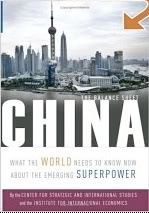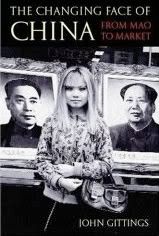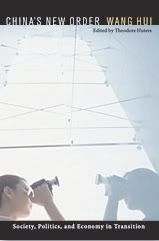China rate hike aimed at cooling economy
Mar 20, 2007
BEIJING - The move by the People's Bank of China (PBoC) on Saturday to raise interest rates is aimed at cooling the Asian powerhouse's red-hot economy by helping to rationalize the growth of investment and lending, maintain price stability and curb excess liquidity, say experts.
"By raising the interest rates, the central bank signaled its concern over the trend towards a higher inflation rate and an overheated economy," said Tang Min, chief economist with the Asia Development Bank Mission in China.
Qin Chijiang, deputy secretary general of the China Society for Finance and Banking, said: "The monetary policy must ensure
balanced economic development, as the serious problem of excess liquidity is affecting every aspect of the economy."
The one-year benchmark interest rates are raised by 0.27 percentage point as of March 18. This will raise the one-year rate for deposits to 2.79% and that for loans to 6.39%, according to the central bank's announcement.
Boosted by the rate hike, the yuan's exchange rate opened on Monday morning at 7.7351 to US$1, slightly up nine basis points from Friday's closing. The Shanghai and Shenzhen stock markets opened lower but soon rebounded.
But Chinese economists generally believe the rate increase will help cool down the overheating stock and property markets.
This is the first interest-rate rise in 2007 after the central bank raised commercial banks' deposit reserve ratio by 0.5 percentage point twice this year to rein in excessive bank lending.
China raised borrowing costs twice last year as the country strove to curb lending growth, reduce overcapacity and prevent prices from surging.
The latest interest-rate hike was widely anticipated by the markets.
"China's recent macroeconomic data showed the country's growth is still pretty fast and faces problems such as excess liquidity," said Zhu Yan, a Bank of China analyst. "The interest-rate rises had been expected, although the timing was a bit surprising as the market had speculated the central bank might wait for the March figures to decide."
A series of economic data released this month reflected that China's economy continues to remain on a fast track with mounting liquidity.
The country's trade surplus hit $23.76 billion in February, the second-highest monthly figure. Money supply added 17.8% last month, the fastest growth in six months, and fixed-asset investment jumped 23.4% in the first two months.
The Chinese government planned to keep the country's Consumer Price Index, a major inflation indicator, below 3% this year but the index rose 2.7% in February, picking up from a 2.2% increase in January, and is still likely to rise further.
Premier Wen Jiabao said on Friday that China's economy still faces big challenges, such as structural instability and imbalances, after years of rapid growth. Wen said problems include "too-fast rises in investments and bank loans, excessive monetary liquidity as well as imbalances in trade and international payments".
PBoC governor Zhou Xiaochuan also said last week that he believed the nation's consumer prices have grown "a bit faster" in recent months. Zhou said the central bank would further use interest rates, bank reserve requirements and bond issuances to soak up liquidity.
China will employ a full range of monetary-policy tools to adjust money and credit supplies to address the problem of excess liquidity in the banking system, according to this year's government work report.
"The reserve ratio adjustments in January and February were effective in absorbing excess liquidity in banks but failed to curb commercial banks' excessive lending," said Yin Jianfeng, an expert with the China Academy of Social Sciences, adding that "the interest-rate rise will help control the overall supplies of money and credit".
Qin said: "To withdraw excess liquidity, the central bank [has] employed a full range of monetary-policy tools, including issuing notes, raising deposit reserve ratio and increasing the benchmark interest rates."
Statistics show the PBoC has withdrawn nearly 980 billion yuan ($129 billion), including 660 billion yuan withdrawn through open market operations and 320 billion yuan through the lifting of the required reserve ratio. Withdrawn money this year is 2.21 times that in the same period of 2006.
The withdrawing of nearly a trillion yuan has not caused the tightening of funds in commercial banks, but showed that the central bank will adopt monetary policies to withdraw liquidity to control credit growth.
Tang said he believes an increase of 0.27 percentage point in the interest rates is merely a "slight adjustment" and does not herald the end of the central bank's control policy.
The central bank usually raises the deposit reserve ratio when there is excess liquidity in the banking system and inflationary pressures remain moderate, said Tang. But various measures - including an interest rate-rise - will be adopted once inflation pressures increase, he said.
Yin said: "The central bank usually raises the benchmark interest rates by 0.27 percentage point, because sharp adjustments will make too strong an impact on the market."
Qin said: "An interest-rate rise may cause overseas idle funds to enter the country.
"Economic restructuring is the fundamental way of curbing excess liquidity and preventing a rebound in investment."
The rate hike may help curb fixed-asset investment, a major source for the overheating economy.
The National Bureau of Statistics said on Friday that fixed-asset investment in China's urban areas rose to 653.5 billion yuan in the first two months, up 23.4%, which was just 0.6 percentage point slower than in the whole of last year.
Investment in real estate, a sector the central government has been desperately trying to rein in, grew 24.3% to 178.6 billion yuan, according to the report.
In the January-February period, investment in projects in the first two months of this year authorized by the central government increased by 21.7% and in local government-approved projects by 23.6% over the same period last year.***
(Asia Pulse/XIC)
Link




0 Comments:
Post a Comment
Subscribe to Post Comments [Atom]
<< Home